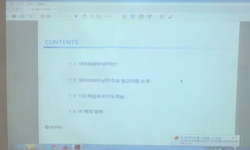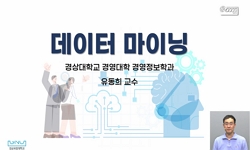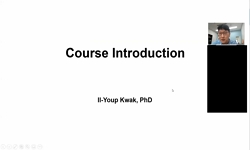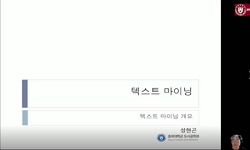소프트웨어 버스마크란 코드 도용 탐지를 위해 프로그램 자체에서 추출된 프로그램의 특징이다. 동적 API 버스마크는 실행 시간 API 호출 시퀀스로부터 추출된다. Tamada가 제안한 Windows 프로그...
http://chineseinput.net/에서 pinyin(병음)방식으로 중국어를 변환할 수 있습니다.
변환된 중국어를 복사하여 사용하시면 됩니다.
- 中文 을 입력하시려면 zhongwen을 입력하시고 space를누르시면됩니다.
- 北京 을 입력하시려면 beijing을 입력하시고 space를 누르시면 됩니다.

Windows 프로그램 도용 탐지를 위한 기능 단위 동적 API 버스마크 = A Functional Unit Dynamic API Birthmark for Windows Programs Code Theft Detection
한글로보기https://www.riss.kr/link?id=A82294661
- 저자
- 발행기관
- 학술지명
- 권호사항
-
발행연도
2009
-
작성언어
Korean
- 주제어
-
KDC
569
-
등재정보
KCI등재
-
자료형태
학술저널
-
수록면
767-776(10쪽)
-
KCI 피인용횟수
3
- 제공처
- 소장기관
-
0
상세조회 -
0
다운로드
부가정보
국문 초록 (Abstract)
소프트웨어 버스마크란 코드 도용 탐지를 위해 프로그램 자체에서 추출된 프로그램의 특징이다. 동적 API 버스마크는 실행 시간 API 호출 시퀀스로부터 추출된다. Tamada가 제안한 Windows 프로그램을 위한 동적 API 버스마크는 프로그램 실행 시작 부분의 API 시퀀스만을 추출하여 프로그램의 중요한 특성을 반영하지 못하였다. 이 논문에서는 프로그램의 핵심 기능을 실행할 때의 API 시퀀스에서 추출한 기능 단위 동적 API 버스마크를 제안한다. 기능 단위 동적 API 버스마크를 이용해 코드 도용을 탐지하기 위해서 먼저 두 프로그램을 실행하여 버스마크를 추출한다. 두 프로그램의 유사도는 프로그램에서 추출한 버스마크를 준전체 정렬 방식을 이용하여 비교하여 측정한다. 버스마크의 신뢰성을 평가하기 위하여 같은 기능을 가진 프로그램들을 대상으로 실험하였다. 강인성을 평가하기 위하여 동일한 소스 코드를 다양한 컴파일 방법으로 만들어 실험하였다. 실험 결과 본 논문에서 제안하는 기능 단위 동적 API 버스마크가 기존의 버스마크에서 탐지할 수 없었던 모듈 단위 도용을 탐지할 수 있음을 보였다.
다국어 초록 (Multilingual Abstract)
A software birthmark is a set of characteristics that are extracted from a program itself to detect code theft. A dynamic API birthmark is extracted from the run-time API call sequences of a program. The dynamic Windows API birthmarks of Tamada et al....
A software birthmark is a set of characteristics that are extracted from a program itself to detect code theft. A dynamic API birthmark is extracted from the run-time API call sequences of a program. The dynamic Windows API birthmarks of Tamada et al. are extracted from API call sequences during the startup period of a program. Therefore, the dynamic birthmarks cannot reflect characteristics of main functions of the program. In this paper, we propose a functional unit birthmark(FDAPI) that is defined as API call sequences recorded during the execution of essential functions of a program. To find out that some functional units of a program are copied from an original program, two FDAPIs are extracted by executing the programs with the same input. The FDAPIs are compared using the semi-global alignment algorithm to compute a similarity between two programs. Programs with the same functionality are compared to show credibility of our birthmark. Binary executables that are compiled differently from the same source code are compared to prove resilience of our birthmark. The experimental result shows that our birthmark can detect module theft of software, to which the existing birthmarks of Tamada et al. cannot be applied.
목차 (Table of Contents)
- 요약
- Abstract
- 1. 서론
- 2. 관련 연구
- 3. 기능 단위 동적 API 버스마크
- 요약
- Abstract
- 1. 서론
- 2. 관련 연구
- 3. 기능 단위 동적 API 버스마크
- 4. 평가
- 5. 결론 및 향후 연구
- 참고문헌
참고문헌 (Reference)
1 C. S. Collberg, "Watermarking, tamper-proofing, and obfuscation-tools for software protection" 28 : 735-746, 2002
2 G. Myles, "Software theft detection through program identification" University of Arizona 2006
3 C. Linn, "Obfuscation of executable code to improve resistance to static disassembly" 290-299, 2003
4 G. Myles, "K-gram based software birthmarks" 2005
5 H. Tamada, "Java Birthmarks-Detecting the Software Theft" 2148-2158, 2005
6 H. Tamada, "Dynamic software birthmarks to detect the theft of windows applications" 20-22, 2004
7 G. Hunt, "Detours: Binary interception of Win32 functions" 135-143, 1999
8 Ginger Myles, "Detecting software theft via whole program path birthmarks" Springer 404-415, 2004
9 Hyun-il Lim, "Detecting Theft of Java Applications via a Static Birthmark Based on Weighted Stack Patterns" 91 (91): 2008
10 Heewan Park, "Detecting Java Theft Based on Static API Trace Birthmark" 2008
1 C. S. Collberg, "Watermarking, tamper-proofing, and obfuscation-tools for software protection" 28 : 735-746, 2002
2 G. Myles, "Software theft detection through program identification" University of Arizona 2006
3 C. Linn, "Obfuscation of executable code to improve resistance to static disassembly" 290-299, 2003
4 G. Myles, "K-gram based software birthmarks" 2005
5 H. Tamada, "Java Birthmarks-Detecting the Software Theft" 2148-2158, 2005
6 H. Tamada, "Dynamic software birthmarks to detect the theft of windows applications" 20-22, 2004
7 G. Hunt, "Detours: Binary interception of Win32 functions" 135-143, 1999
8 Ginger Myles, "Detecting software theft via whole program path birthmarks" Springer 404-415, 2004
9 Hyun-il Lim, "Detecting Theft of Java Applications via a Static Birthmark Based on Weighted Stack Patterns" 91 (91): 2008
10 Heewan Park, "Detecting Java Theft Based on Static API Trace Birthmark" 2008
11 S. Choi, "A static birthmark of binary executables based on API call structure" 2-16, 2007
12 C. Wang, "A security architecture for survivability mechanisms" University of Virginia 2000
13 D. Schuler, "A Dynamic Birthmark for Java" 2007
동일학술지(권/호) 다른 논문
-
대용량 온라인 한자 인식을 위한 클러스터링 거리계산 척도
- 한국정보과학회
- 김광섭(Kwang-Seob Kim)
- 2009
- KCI등재
-
정규상호정보와 지지벡터기계를 이용한 천식 관련 단일염기다형성 유전형 자료 분석
- 한국정보과학회
- 이중섭(Jungseob Lee)
- 2009
- KCI등재
-
- 한국정보과학회
- 문중희(Joong Hee Moon)
- 2009
- KCI등재
-
사용자 화면 중심의 블랙 박스 테스트와 웹 인터페이스 테스트 커버리지를 통한 웹 어플리케이션 테스트 방법
- 한국정보과학회
- 임정희(Jeunghee Lim)
- 2009
- KCI등재
분석정보
인용정보 인용지수 설명보기
학술지 이력
| 연월일 | 이력구분 | 이력상세 | 등재구분 |
|---|---|---|---|
| 2014-09-01 | 평가 | 학술지 통합(기타) | |
| 2013-04-26 | 학술지명변경 | 한글명 : 정보과학회논문지 : 소프트웨어 및 응용</br>외국어명 : Journal of KIISE : Software and Applications |  |
| 2011-01-01 | 평가 | 등재학술지 유지(등재유지) |  |
| 2009-01-01 | 평가 | 등재학술지 유지(등재유지) |  |
| 2008-10-17 | 학술지명변경 | 한글명 : 정보과학회논문지 : 소프트웨어 및 응용</br>외국어명 : Journal of KISS : Software and Applications |  |
| 2007-01-01 | 평가 | 등재학술지 유지(등재유지) |  |
| 2005-01-01 | 평가 | 등재학술지 유지(등재유지) |  |
| 2002-01-01 | 평가 | 등재학술지 선정(등재후보2차) |  |




 ScienceON
ScienceON DBpia
DBpia







